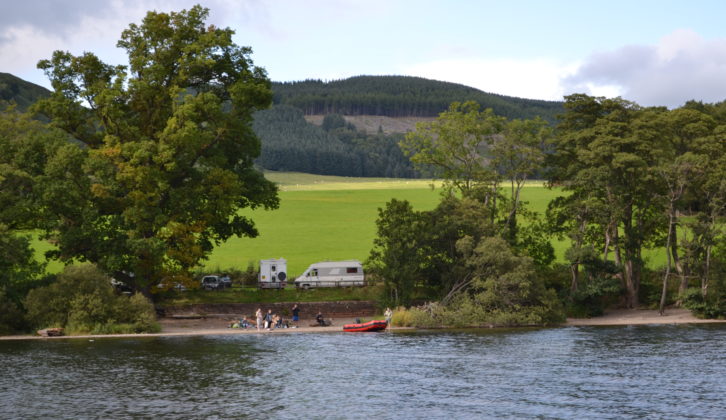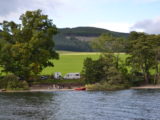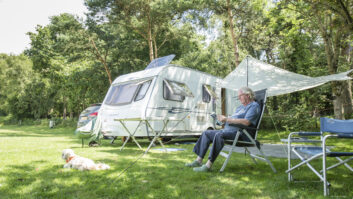Need some inspiration about where to visit this summer – our quick Top Ten picks out the best UK touring destinations
The Lake District
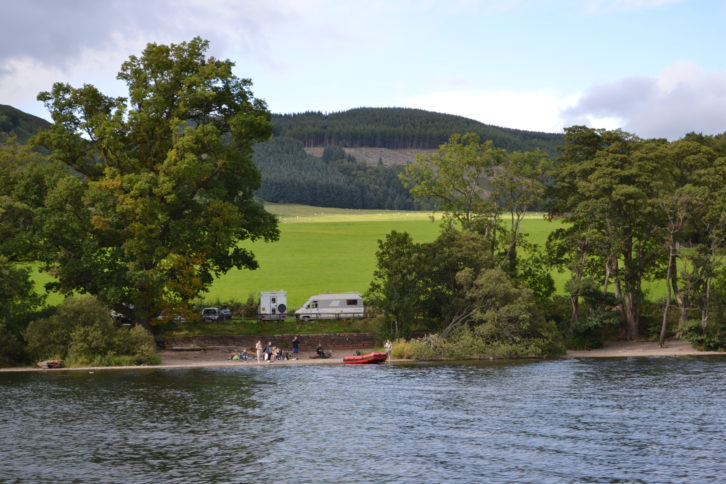
It’s a national park and a world heritage site, with mild winters, cool summers and an awful lot of rain – around 80 inches a year – but not enough to deter the millions who visit one of Britain’s most beautiful landscapes. They come for the views of mountains, plunging into long lakes that have filled valleys carved by glaciers. This is serious walking country with four of its peaks – Scafell Pike, Scafell, Helvellyn and Skiddaw topping 3000 feet.
Catbells, at 1481 feet, is one of the more accessible fells and is a favourite with families, with 360 degree panoramic views, taking in Derwentwater, Keswick, Skiddaw, Blencathra and the Western Fells.
Cruise boats on Windermere, Derwentwater, Coniston Water and Ullswater get you to points of interest. Cruise the five-mile long Coniston Water, where Donald Campbell attempted his speed records, on the rebuilt Victorian steam yacht Gondola, or catch one of the vintage boats plying Ullswater, said to be the most beautiful lake in England. It’s also one of the deepest, plunging to 205 feet, and is known as the Dark Lake. In medieval times it was believed to be home to monsters and during World War II it was used to test mini submarines.
Towns around the lakes accommodate the wet weather days, but there are other places to visit. These include The World of Beatrix Potter at Bowness-on-Windermere; Beatrix Potter’s house, Hill Top at Near Sawrey, Hawkshead; the Ruskin Museum, the Lakeland Motor Museum, Wordsworth’s House, the Keswick Museum, the Pencil Museum and Lowther, Muncaster and Sizergh castles.
The area’s mining heritage should not be forgotten. Graphite, copper, silver, lead and slate have all been mined here and a visit to the famous slate mines and the daredevil walks of the Via Ferrata Classic and Ferrata Xtreme at Honister give you some idea of what the miners had to endure.
Cornwall
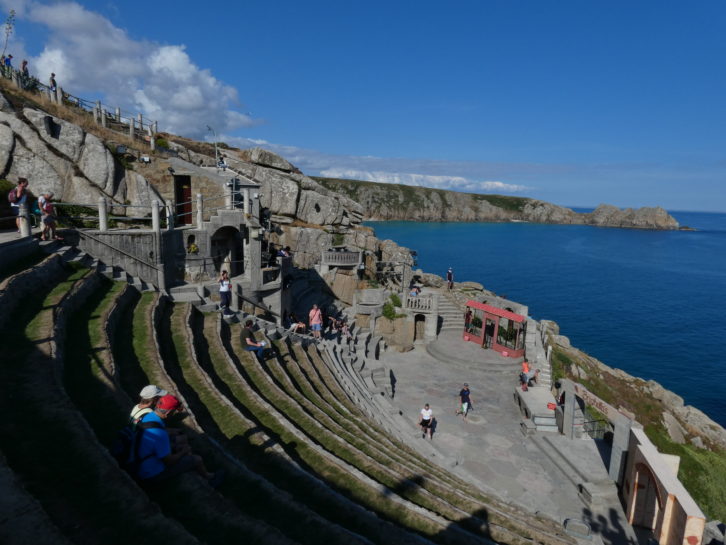 This ancient county is rugged and mysterious with an industry of tin mining that dates back 4000 years and a 700-year history of disreputable smuggling activities. It’s a place of myths and legends, of rock-throwing giants and, of course, the noble King Arthur. Its roots as a Celtic nation precede the arrival of the Romans. It is also one of the prettiest counties in England; warmed by the Gulf Stream, it boasts a sub-tropical climate producing exotic flora within glorious gardens, and a once thriving and still important fishing industry.
This ancient county is rugged and mysterious with an industry of tin mining that dates back 4000 years and a 700-year history of disreputable smuggling activities. It’s a place of myths and legends, of rock-throwing giants and, of course, the noble King Arthur. Its roots as a Celtic nation precede the arrival of the Romans. It is also one of the prettiest counties in England; warmed by the Gulf Stream, it boasts a sub-tropical climate producing exotic flora within glorious gardens, and a once thriving and still important fishing industry.
The mild climate and a long coastline packed with picturesque fishing villages, secret coves and some outstanding surfing beaches make the narrow Cornwall peninsula a much loved holiday destination. Among the favourite coastal hot spots are Newquay, Perranporth, Porthtowan, Padstow, Helston and Sennen. In the fishing villages of Fowey, Charlestown, Mevagissey, Mousehole, St Mawes, Port Isaac and St Ives relax and watch small fishing boats bob about on a blue sea.
St Ives has also been attracting artists since the late 19th century and has its own Tate Gallery. To explore the town use the park and ride from Lelant Saltings or St Erth stations.
At Marazion check the tides and brave the causeway out to St Michael’s Mount to visit the castle and explore the gardens. Further west along the coast the vast sandy beach at Porthcurno is overlooked by the famous open-air Minack Theatre, built into the cliff. The first telegraph communication cables connecting England to the United States landed at Porthcurno. Visit the museum there to find out more.
Copper, silver and tin are all part of Cornwall’s mining heritage with the production of arsenic as a byproduct of the mining process. Mining areas in West Devon and Cornwall became World Heritage Sites in 2007, explore the relics and museums found on Bodmin Moor as well as along the coast. China clay is the source of most recent mining activities with the deposit near St Austells among the largest in the world.
There’s much to see in this beautiful county and if you want to reach all its nooks and crannies use a small vehicle to navigate the narrow lanes.
North Devon
The miles of demerara sugar sands that comprise Saunton Sands, Croyde, Woolacombe, and Westward Ho! beaches with the most perfect surf rushing onto them make this part of the North Devon coast a serious surfing Mecca. The Museum of British Surfing can be found at Braunton. It’s a paradise for thrill-seeking water babies, and it is also part of the North Devon Areas of Outstanding Natural Beauty that stretch from Combe Martin to the Hartland Peninsula.
The north coast is where the ridges of Exmoor dramatically drop into the sea. In fact, some of the smaller beaches around this northern coast are so isolated, and the paths down to them so potentially hazardous, that if you reach them you could possibly have the place to yourself for days.
Many of the area’s main resorts were developed in the Victorian era. Steep roads descend into Ilfracombe, where you pass through tunnels carved in the 1820s to reach the beaches where tidal pools are great for rockpooling. Ilfracombe is a charming collection of colourful shop front facades, cosy coffee shops, more than its fair share of imposing Victorian churches and a 20m-tall bronze statue – Verity – a gift to the town by artist Damien Hirst.
Picnic at the Valley of the Rocks near Lynton. The valley is dotted with granite stacks that have been worn down by the wind over the millennia. One of these stacks, Mother Meldrum’s Cave, features in Lorna Doone, R D Blackmore’s romantic novel set in Exmoor.
Lynton is a collection of cafés, boutiques and pasty shops, and some great views out into the Bristol Channel. Linking clifftop Lynton to Lynmouth below is the famous funicular railway, the world’s highest and steepest completely water powered railway, which opened in 1885. Before the railway everything had to be carried from the harbour at Lynmouth by donkeys and pack horses up a tortuous hillside trail. A proper road linking the two was only built in 1828.
Heading east, behind Saunton Sands, is Braunton Burrows, one of the largest sand dune systems in the British Isles and a UNESCO designated biosphere reserve. Further east still is the Hartland Heritage Coast and the famous village of Clovelly with its cobblestone street descending steeply to the harbour. Goods are transported by sledge or donkey, no cars are allowed. Take time to visit Hartland Abbey and its stunning gardens, which date back to the 12th century.
It’s a coast of fascinating contrasts that will appeal to both the adventurous and those who prefer to relax when on holiday.
Snowdonia National Park
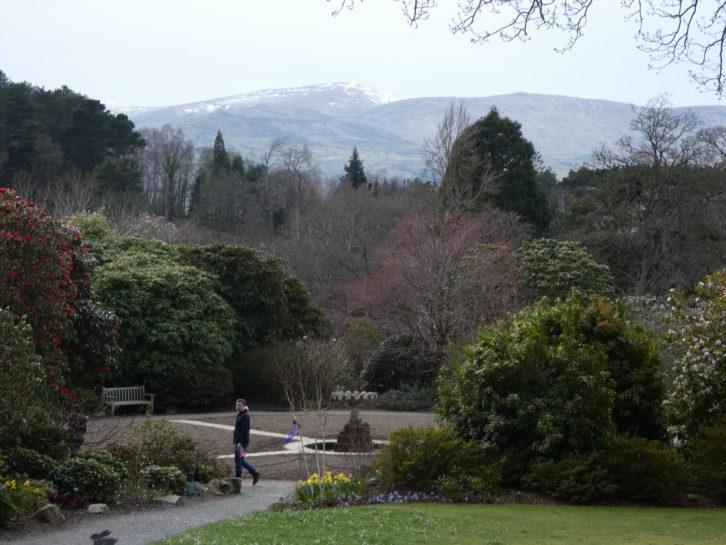 The Snowdonia National Park covers 823 square miles of mountains and coastline. Aside from beautiful beaches, one of the coastal highlights is Portmeirion, the extraordinary creation of architect Bartram Clough Williams-Ellis (1883-1978), who, over five decades, built the village sometimes through salvage from demolition sites. An Italian-style piazza, including a pool, a fountain and a mock chessboard, lies at its heart. The village is the setting for the 1960s cult TV series, The Prisoner.
The Snowdonia National Park covers 823 square miles of mountains and coastline. Aside from beautiful beaches, one of the coastal highlights is Portmeirion, the extraordinary creation of architect Bartram Clough Williams-Ellis (1883-1978), who, over five decades, built the village sometimes through salvage from demolition sites. An Italian-style piazza, including a pool, a fountain and a mock chessboard, lies at its heart. The village is the setting for the 1960s cult TV series, The Prisoner.
A ride on the Welsh Highland Railway steam train from nearby Porthmadog to Caernarfon takes in Snowdonia’s spectacular scenery. On its 25-mile route, the railway offers fabulous views of rivers, waterfalls, lakes and mountains, including the summit of Snowdon, before descending into Caernarfon and allowing the first glimpse of its magnificent castle.
Caernarfon castle is one of 12 built in a ring around Snowdonia by King Edward I during his campaign to defeat the Welsh princes and bring Wales under English rule and was the birthplace of the King’s eldest son, also called Edward, in 1284 – making him the first English Prince of Wales. Views from the castle towers and walls take in the Menai straits and Anglesey to the north and west and the River Seiont to the south.
At 3,560 feet, Snowdon is the highest mountain in Wales and England and it can be ascended on foot or by rail with a good starting point for both at the lakeside village of Llanberis.
The Llanberis path is one of the easiest walks up Snowdon, and among the longest at 4.5 miles. At about two-thirds of the way the gradient turns from ‘manageable’ to ‘challenging’, and will require many stops, but the astonishing views will provide reward and at the top there is a café to give you time to take in your achievement before the descent.
Llanberis is also home to a ruined castle, a hydro-electric power station attraction, a lakeside steam railway and the National Slate Museum. The slate mining industry peaked in the 19th century then fell into sharp decline. You can use the Ffestiniog Railway, the world’s oldest narrow-gauge steam railway, which also departs from Porthmadog, to reach the Llechwedd Slate Caverns at Blaenau Ffestiniog. The attraction uses a combination of audio-visual techniques and experienced local tour guides to transport you 500 feet below ground into the ‘Deep Mine’ to tell the story of slate mining in North Wales. The venue also hosts ‘Bounce Below’, an underground trampoline park, and ‘Titan’, a four-person zip wire, or you can take the ‘Quarry Explorer’, a 1.5-hour tour through slate quarries and into the mountains.
On route to Snowdonia’s northern point, Conwy, take time to visit the famous Bodnant Gardens set against the backdrop of Snowdonia’s foothill. And in Conwy, towering over the town’s narrow streets is another of Edward I’s formidable medieval castles, while nestled among the streets is Plas Mawr, the finest Elizabethan merchant’s townhouse in Britain.
Speyside
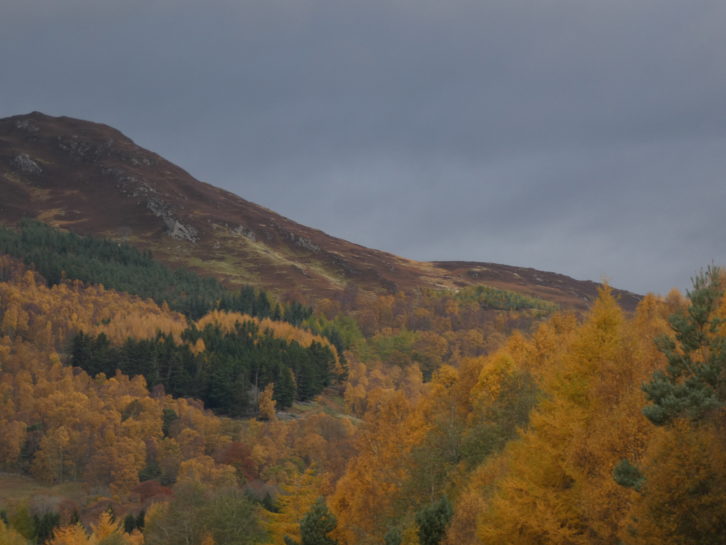 Driving through the Cairngorms National Park is spectacular at any time of year, but is particularly beautiful during the autumn when the lower mountain slopes are cloaked in forests of gold, red and green. Follow the A9 as far as Kinveachy, then take the A95 coming off before it turns sharply right to cross the River Spey. Enter the Georgian town of Grantown on Spey. The town centres around a wide main road and offers plenty of eateries and a campsite.
Driving through the Cairngorms National Park is spectacular at any time of year, but is particularly beautiful during the autumn when the lower mountain slopes are cloaked in forests of gold, red and green. Follow the A9 as far as Kinveachy, then take the A95 coming off before it turns sharply right to cross the River Spey. Enter the Georgian town of Grantown on Spey. The town centres around a wide main road and offers plenty of eateries and a campsite.
Speyside is famous for its whisky trail, but it’s also great for walking and cycle rides along the Speyside Way and there is climbing, too. Stay at Grantown on Spey and you are just 45 minutes from Inverness, an hour or so from Elgin, Loch Ness and Cullen for the dolphins and less than half an hour to Aviemore. For children there’s the year-round Landmark Forest Adventure Park and the Reindeer at Glenmore.
Follow the Speyside Malt Whisky Trail and you will take in some glorious scenery as the River Spey winds its way from the Cairngorms to Spey Bay. The trail comprises nine sites, eight distilleries and one cooperage, where you can learn how barrels that once held sherry from Spain and bourbon from the US are repurposed for the malt whisky industry. If you only have time to stop at one distillery go for Glen Grant at Rothes, which has a beautiful garden to wander through, as well as providing a fascinating tour of its distillery, where you can see the beautiful copper stills and learn that the whisky actually begins its journey as a mash and beer and its flavour depends on the ‘malt’ and the pure water used, in this case, the Spey. The tour includes a tasting at the end.
Did you know that 800 years ago reindeer were native to the UK? In 1952 they were re-introduced to the UK by a Swedish Sami, Mikel Utsi, who spotted lichens – reindeer’s chief foodstuffs – growing on the ground, rock and trees. The Cairngorm Reindeer Herd now comprises 150 beasts that roam The Cairngorms and the Cromdale hills near Glenlivet. Visit the shop and paddocks at Glenmore, six miles east of Aviemore, next door to the Glenmore Forest Park Visitor Centre.
Speyside is just part of a spectacularly scenic circular driving route, the North East 250. The route takes in Aberdeen, Deeside, the Cairngorms, Speyside, the Moray Coast and the East Coast. Dip in and out of it as time allows: the route will take in castles, villages, mountains, distilleries, museums, ski schools and dolphin centres.
Norfolk
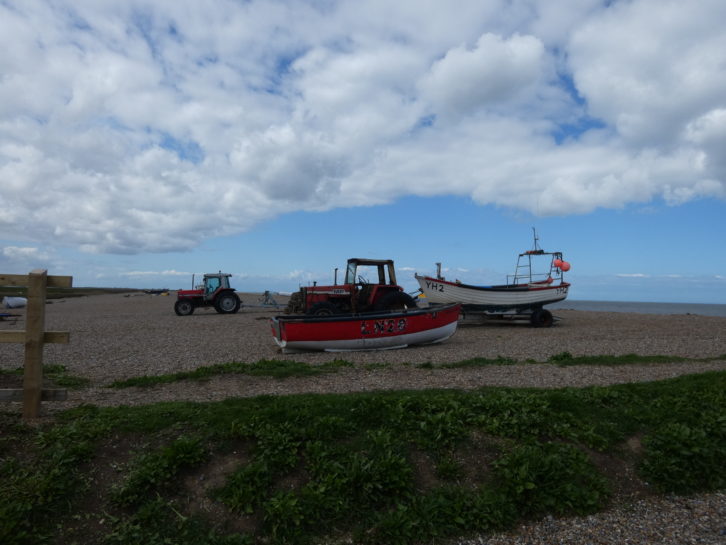 Norfolk’s enduring appeal is down to both natural and human activity. The flat topography has given rise to salt marshes around its coastline, providing a haven for wildlife and migrating birds. While medieval peat diggings in the floodplains in the east of the county are the origins of the Norfolk Broads.
Norfolk’s enduring appeal is down to both natural and human activity. The flat topography has given rise to salt marshes around its coastline, providing a haven for wildlife and migrating birds. While medieval peat diggings in the floodplains in the east of the county are the origins of the Norfolk Broads.
History, too, plays its part in drawing visitors. This is Nelson’s county – the Lord Admiral was born and grew up in Burnham Market and attended Norwich Grammar School. It’s also the location of the Queen’s summer palace – Sandringham – and of several fine houses, including Holkham Hall, Houghton Hall, Blickling Hall, Felbrigg Hall and Wiveton Hall. The city of Norwich was once home to the Iceni tribe and Queen Boudicca, was occupied by the Romans and became the largest walled town in medieval England. While King’s Lynn was an important Hanseatic port from the 12th century.
East of King’s Lynn is the ancient village of Castle Acre, which boasts a Cluniac Priory and a castle. The ruined castle dates back to the time of William the Conqueror, while the impressive Cluniac Priory is an off-shoot of the Cluniac Priory at Lewes in East Sussex. The ruins show that this was a rich order and include the best-preserved two-storey latrine in England.
More recent history includes a working watermill at Letheringsett, still milling flour, and the North Norfolk Railway, known as the Poppy Line, which runs steam and diesel locomotives pulling beautiful wooden carriages between Holt and Sheringham. At Weybourne is the Muckleburgh Military Collection, a museum built on the grounds of a former Royal Artillery Anti-Aircraft training camp.
From King’s Lynn to Great Yarmouth the coastline offers a diverse mix of nature reserves and handsome seaside resorts. The county, once one of the most densely populated areas of England, is a visitor treasure trove.
Peak District
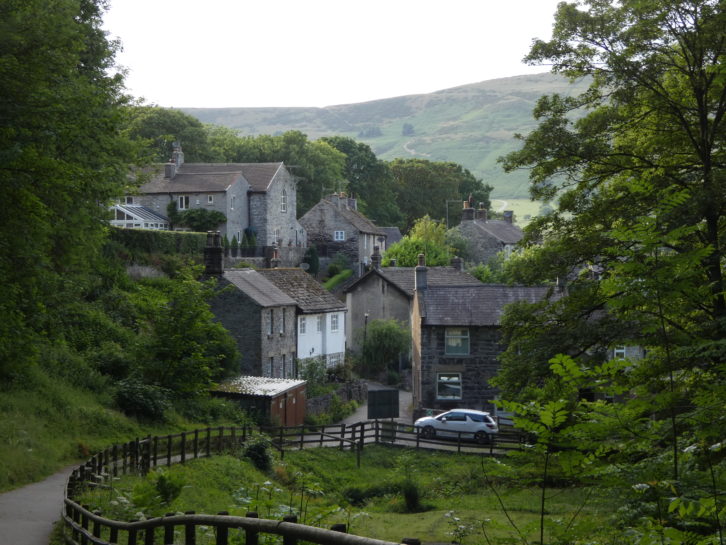 Did you know that more than two-thirds of the UK’s population lives within four hours’ drive of the Peak District National Park. That makes it perfect as a staycation destination. This wild and craggy place, which was carved out by an Ice Age glacier, lies between the conurbations of Manchester and Sheffield, offering refuge from the stresses of city life. Its stresses are of a different nature.
Did you know that more than two-thirds of the UK’s population lives within four hours’ drive of the Peak District National Park. That makes it perfect as a staycation destination. This wild and craggy place, which was carved out by an Ice Age glacier, lies between the conurbations of Manchester and Sheffield, offering refuge from the stresses of city life. Its stresses are of a different nature.
Winnats Pass, in Derbyshire’s High Peak district, for example, is on a website of the world’s most dangerous roads. It’s steep and narrow with few laybys and turning points, it’s much loved by cyclists but you’ll need a strong nerve if you are driving a large vehicle.
Follow the A6187 from Sheffield to Castleton in Hope Valley for a gentler introduction to the visual treats in store. The road is high, but easily navigable, with gorgeous views across the Dales before its descent into Hathersage and Hope Valley.
The hills around Castleton are home to subterranean rivers and huge underground caverns where one of the world’s rarest semi-precious stones, the purpley-blue and yellow Blue John, is mined. Since Roman times lead mining was the industry here; by the 18th century there was said to be 25,000 mineshafts. At Speedwell Caverns much of the tour is by boat, but a visit to the Blue John Cavern involves a couple of hundred steps. Opposite the cavern entrance is Mam Tor – the shivering mountain – popular with walkers for the far-reaching views.
In nearby Derwent Valley are Howden, Derwent and Ladybower Reservoirs famous for being used as practice runs for the RAF’s Dam Buster raids on the dams of Germany. Today they are great areas for bird watching.
If you are partial to a pudding, the towns of Buxton and Bakewell should be on your visiting list. After a visit to the famous Bakewell Pudding shop, pop into the Parish Church for a glimpse of the 1000-year-old Anglo-Saxon stones stored in the porch and the crosses in the churchyard. Buxton, built on the site of thermal springs, dates back to Roman times as a spa town; today its Georgian and Victorian architecture boasts an Opera House, a glass Pavilion housing an exotic tropical garden and the Buxton Pudding Emporium.
And the difference between a Bakewell and a Buxton pudding? Almonds!
Cotswolds
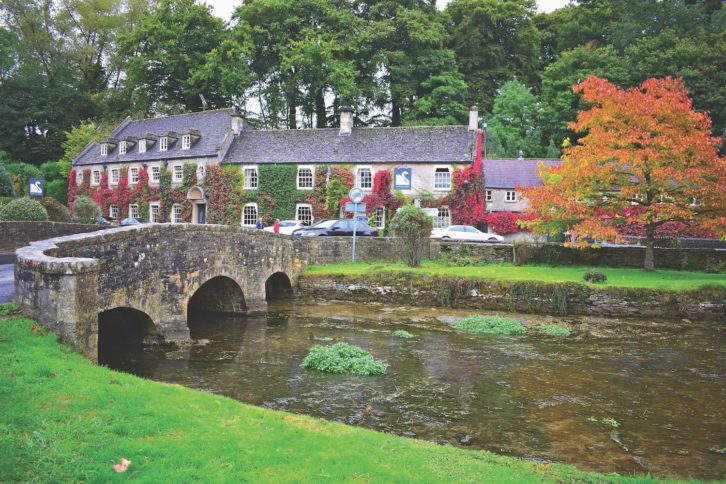 The quintessential English village comprises small collections of, in the main, ancient buildings fronted by pretty gardens, set in bucolic surroundings and usually serviced by at least one pub and a church. They are places that we love to visit and imagine that we might one day own a piece of them, but in the meantime we can use their watering holes, marvel at their architecture and settle, for that moment, into their pace of life. It’s delicious and attainable escapism, and there’s plenty of it to be had in The Cotswolds Area of Outstanding Natural Beauty where the rolling green countryside is punctuated by picturesque towns and villages built from the warm yellow stone for which the area is famous.
The quintessential English village comprises small collections of, in the main, ancient buildings fronted by pretty gardens, set in bucolic surroundings and usually serviced by at least one pub and a church. They are places that we love to visit and imagine that we might one day own a piece of them, but in the meantime we can use their watering holes, marvel at their architecture and settle, for that moment, into their pace of life. It’s delicious and attainable escapism, and there’s plenty of it to be had in The Cotswolds Area of Outstanding Natural Beauty where the rolling green countryside is punctuated by picturesque towns and villages built from the warm yellow stone for which the area is famous.
Bibury in Gloucestershire, which has its own trout farm and is dissected by the River Colne, is one of England’s most iconic hamlets. In Bourton on the Water, known as ‘the Venice of the Cotswolds’, the River Windrush trickles under small bridges.Castle Combe’s limestone cottages, floral hanging baskets and stone-tiled roofs, are often used as a backdrop in films and TV dramas, with the town bridge one of the most photographed features. The National Trust village of Lacock is home to Lacock Abbey and the Fox Talbot photography museum. Fans of TVs Father Brown will recognise Blockley as the fictional village of Kembleford. Burford’s ancient high street leads down to the three-arched medieval bridge spanning the River Windrush, while Lower Slaughter’s Manor Gardens has five acres of glorious landscape gardens and fine specimen trees to explore. Kingham, Mickleton and Northleach are all beautiful places to explore.
In the town of Cirencester is the Cotswold Discovery Centre housed in the Old Prison, which dates back to the 18th century. The town’s Cirencester Park is owned by the Bathurst family and is part of the extensive Bathurst Estate. Bathurst Mansion is protected from prying eyes by the tallest yew tree hedge in the world. Cirencester was the second largest city in Roman times, and then called Corinium; its Roman history can be explored at the Corinium Museum. About a mile away is the site of a Roman Amphitheatre, where massive earthworks are all that remains of a huge amphitheatre that once held 8000 spectators. For antiques head to Stow-on-the-Wold.
Isle of Wight
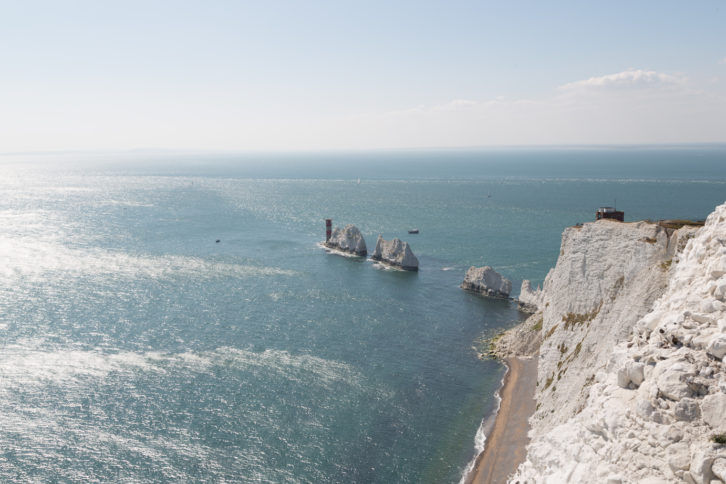 The Isle of Wight is a perennial favourite among British holidaymakers. Many of us will remember family breaks from bygone years starting with that exciting 45-minute ferry crossing that marked the beginning of the holiday. But why do we love it so much? Perhaps it’s the island’s size at just 23 miles long by 13 miles wide, making it very manageable to explore. There’s variety, too, from cliff tops to nature reserves, geological structures to manmade defences, botanical gardens to a garlic farm.
The Isle of Wight is a perennial favourite among British holidaymakers. Many of us will remember family breaks from bygone years starting with that exciting 45-minute ferry crossing that marked the beginning of the holiday. But why do we love it so much? Perhaps it’s the island’s size at just 23 miles long by 13 miles wide, making it very manageable to explore. There’s variety, too, from cliff tops to nature reserves, geological structures to manmade defences, botanical gardens to a garlic farm.
The island was a favourite with Queen Victoria and Prince Albert, who had a summer palace built here, and the poet Alfred, Lord Tennyson who lived here for the latter half of his life. Wildlife watchers will be treated to glimpses of seabirds, seals and red squirrels. The beaches will reward fossil hunters and surfers and of course, there is the sailing. Cowes Week sailing regatta takes place in the first week of August.
With 805km of footpaths, the IOW has a choice of walks for a range of abilities and you’ll be sure to come across something interesting on route. Much of the Island has been designated an Area of Outstanding Natural Beauty. The northwest of the Island is the Newtown nature reserve and the Hamstead Heritage coast, to the southwest are the Needles landmark where the 19th century Old and New Batteries are located to protect Portsmouth’s dockyards from attack. Here there is a 1940s-style tea room and you can take a chair lift ride to the beach. Close by is the National Trust’s Mottistone Gardens and Estate, near Brighstone. The gardens cluster around an ancient manor house, and were planted as recently as the 1960s, with a Mediterranean-style planting scheme.
To the south is Britain’s hottest garden – Ventnor Botanic Gardens – where can also be found underground caverns, secret passageways and a tunnel through the cliff.
On the north coast is the Italianate Osborne House, Queen Victoria’s summer palace, of particular interest here is the magnificent, Indian-inspired Durbar Wing, including the Durbar Room, added in the 1890s. It’s a gorgeous collection of Indian architectural styles and houses a stunning collection of gifts given by India. A 20-minute walk gets you down to the family’s private beach, where you can see Victoria’s carefully-conserved bathing machine, and in the grounds, set in shady woodland, is the pretty Swiss Cottage and Garden, gifted to the royal children.
Dorset’s Jurassic Coast
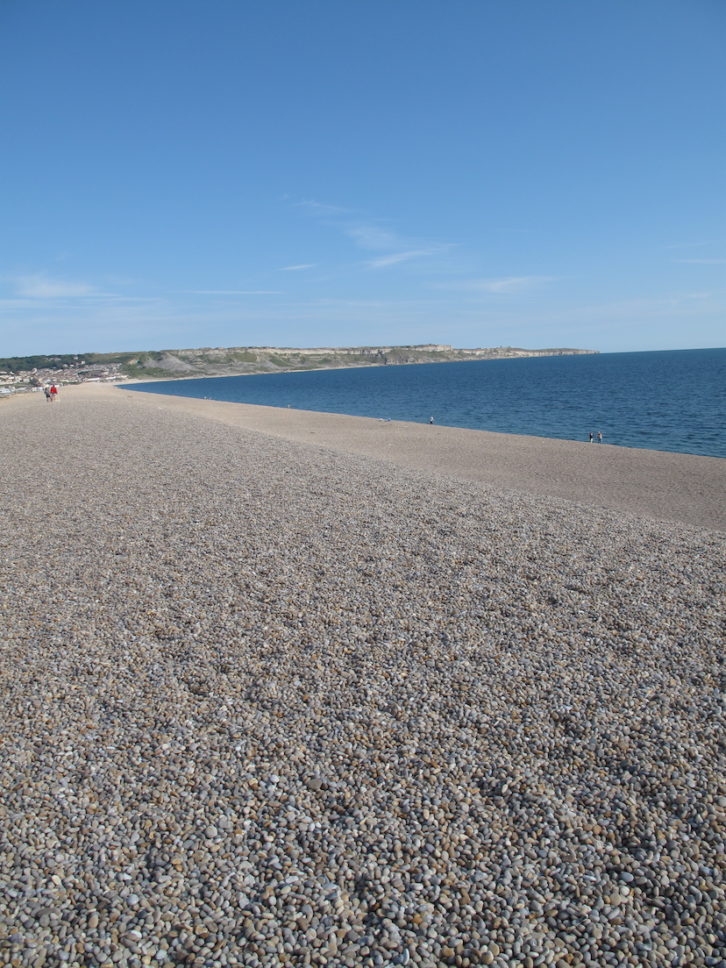 Warm summers and mild winters have made Dorset a popular area for tourism. Chalk, limestone, clay, shale, gravel and sand are its bedrock; with no coal it was bypassed by the Industrial Revolution, leaving the unspoilt countryside home to beautiful market towns and picturesque villages. It does have oil, however, at Kimmeridge, where the UK’s oldest ‘nodding donkey’ has been pumping oil since 1961.
Warm summers and mild winters have made Dorset a popular area for tourism. Chalk, limestone, clay, shale, gravel and sand are its bedrock; with no coal it was bypassed by the Industrial Revolution, leaving the unspoilt countryside home to beautiful market towns and picturesque villages. It does have oil, however, at Kimmeridge, where the UK’s oldest ‘nodding donkey’ has been pumping oil since 1961.
Its principal coastal towns are Bournemouth, Poole and Christchurch in the south east; but it’s from Studland in the east to Ware in the west that the coastline, rich in fossils, has been designated a World Heritage Site and offers a fascinating area to explore. This is a wonderful county for walkers, who can pick up the South West Coast Path at the entrance to Poole Harbour and follow it taking in Old Harry Rocks, two nature reserves, Kimmeridge, Lulworth Cove, Durdle Door, Weymouth, the Isle of Portland, Chesil Beach, and on past Charmouth and Lyme Regis into Devon.
At Kimmeridge the Wild Seas Centre runs rockpooling, crabbing and snorkelling trails in its shallow waters and the area is popular with surfers and windsurfers. A little further west and set within a gap in the Purbeck Hills is Corfe Castle and its model village. The horseshoe shaped Lulworth Cove offers safe bathing and coasteering, plus geological wonders that extend along the coast taking in the iconic Durdle Door. Further west is the popular seaside resort of Weymouth with its long sandy beach, beach huts and Punch and Judy show. The southernmost point of the Jurassic Coast is the Isle of Portland, which is connected to the mainland by the southern end of the 18-mile long Chesil Beach. This extraordinary shingle barrier is around 36 feet high (11 metres) above sea level and between it and the mainland is a lagoon known as the Fleet, which is an important area for wildlife.
Behind Chesil Beach is the ancient village of Abbotsbury, which is famous for its long-established swannery and sub-tropical gardens founded in 1765. Chesil Beach ends at the sandy cliffs of West Bay, which featured in the TV series Broadchurch. In nearby Bridport Museum you can view fossils found in West Bay’s cliffs. Continuing along the South West Coast Path takes in Charmouth and Lyme Regis, both important centres for fossil hunters. Lyme Regis is also famous for its Cobb wall that shelters the harbour.
If you liked this… READ THESE:
10 beautiful cities to visit in the UK and Europe
10 Top Sites for World Heritage
Bath or Bristol? Two cities, one break
If you’ve enjoyed reading this article, why not get the latest news, reviews and features delivered direct to your door or inbox every month. Take advantage of our brilliant Practical Caravan magazine SUBSCRIBERS’ OFFER and SIGN UP TO OUR NEWSLETTER for regular weekly updates on all things caravan related.
The mild climate and a long coastline with secret coves and outstanding surfing beaches make Cornwall a much loved destination
